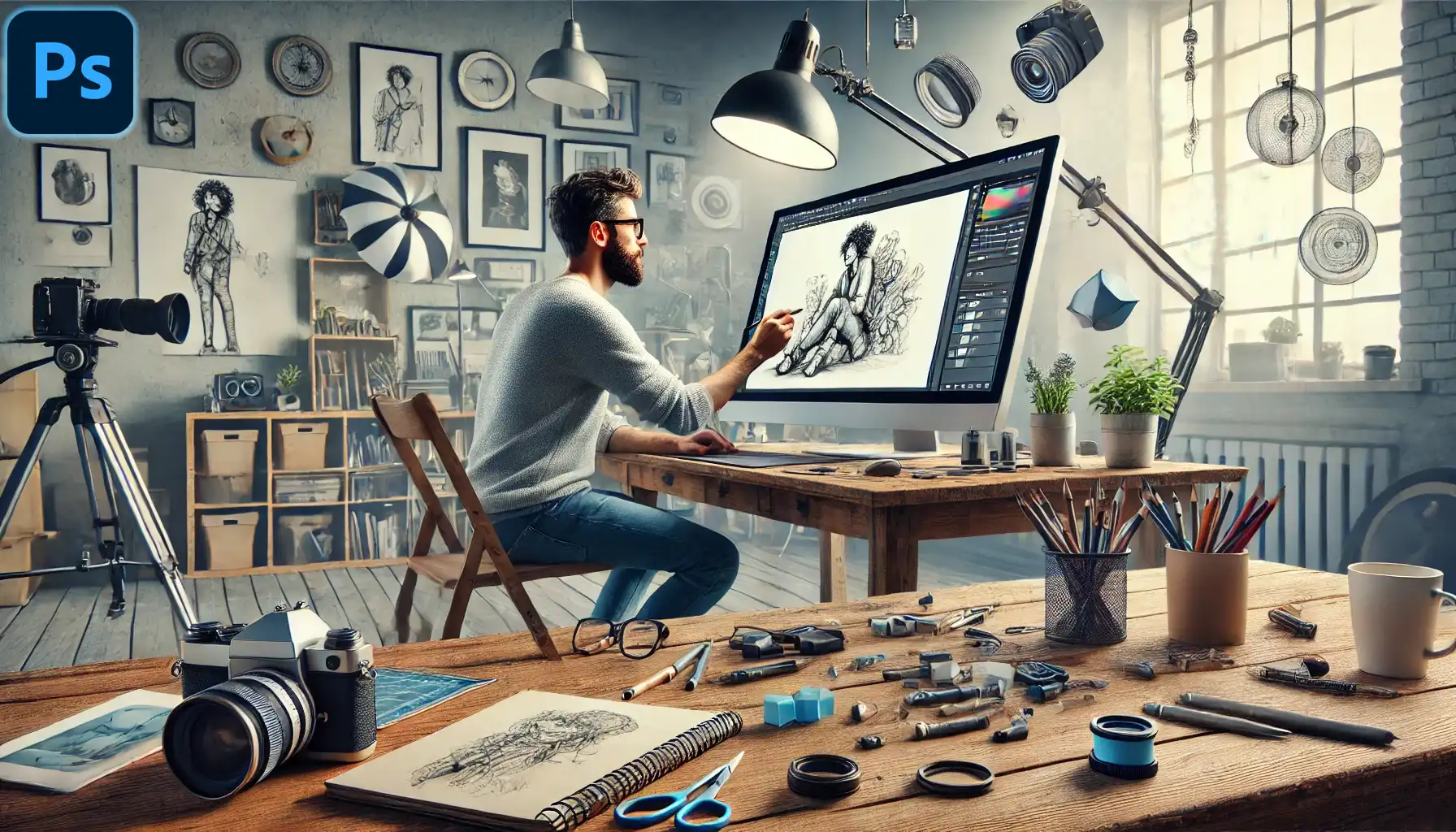
Have you ever wondered how to draw in Photoshop? Whether you’re a beginner or looking to sharpen your skills, this guide will capture your attention and spark your interest.
I know how overwhelming it can be to navigate Photoshop’s limitless collection of tools and features, but don’t worry – I’m here to make it simple and enjoyable.
Imagine the satisfaction you’ll feel as you create stunning digital art pieces, step by step. Ready to dive in and unleash your creativity? Let’s get started!
Table of Contents
Understanding Photoshop Interface
Photoshop is an extensive program. Knowing your way around the interface helps you create stunning images efficiently. Let’s walk through the basics.
Setting Up Your Workspace
When you start drawing in Photoshop, it’s important to set up a workspace that matches your needs. A custom workspace makes tasks smoother.
Creating a New File
First, create a new file. It’s straightforward: go to File > New. The options bar at the top shows settings like dimensions and resolution. Once you click OK, your canvas is ready.
Familiarizing with Tools
Next, familiarize yourself with the tools panel on the left side. Fundamental tools include the pen tool, brush tools, and lasso tools. These are your primary drawing instruments.
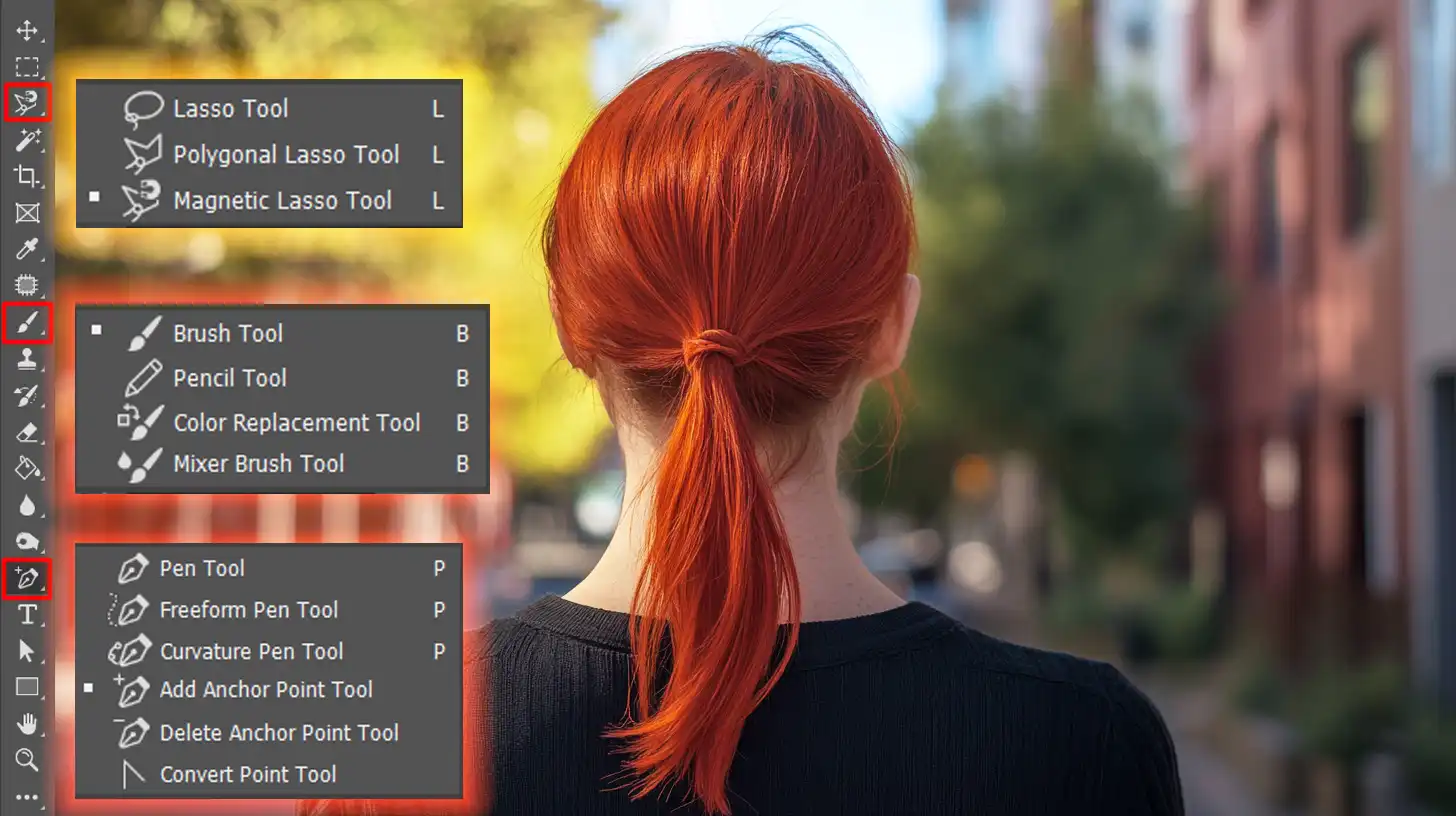
Using Layers
The layers panel is another important part. Using layers keeps your work organized. Always create new layers for different elements. This allows easy editing without affecting other parts.
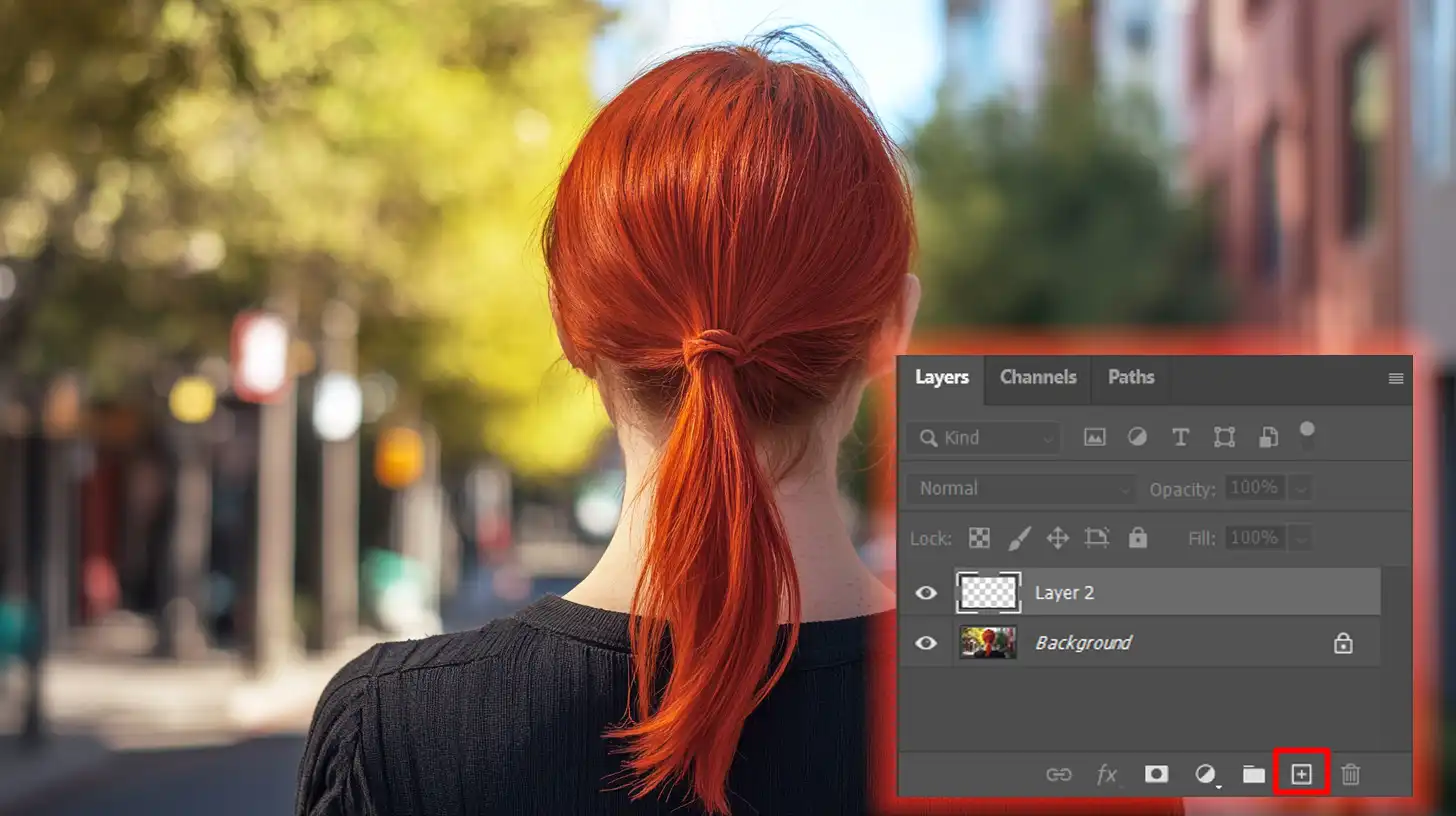
Customizing the Workspace
Now, customize the workspace. You can move and dock panels to suit your workflow. For example, if you use the brush tools often, keep those settings handy.
To save your layout, go to Window > Workspace > New Workspace and give it a name. Now, every time you open Photoshop, load your workspace to have everything in place.
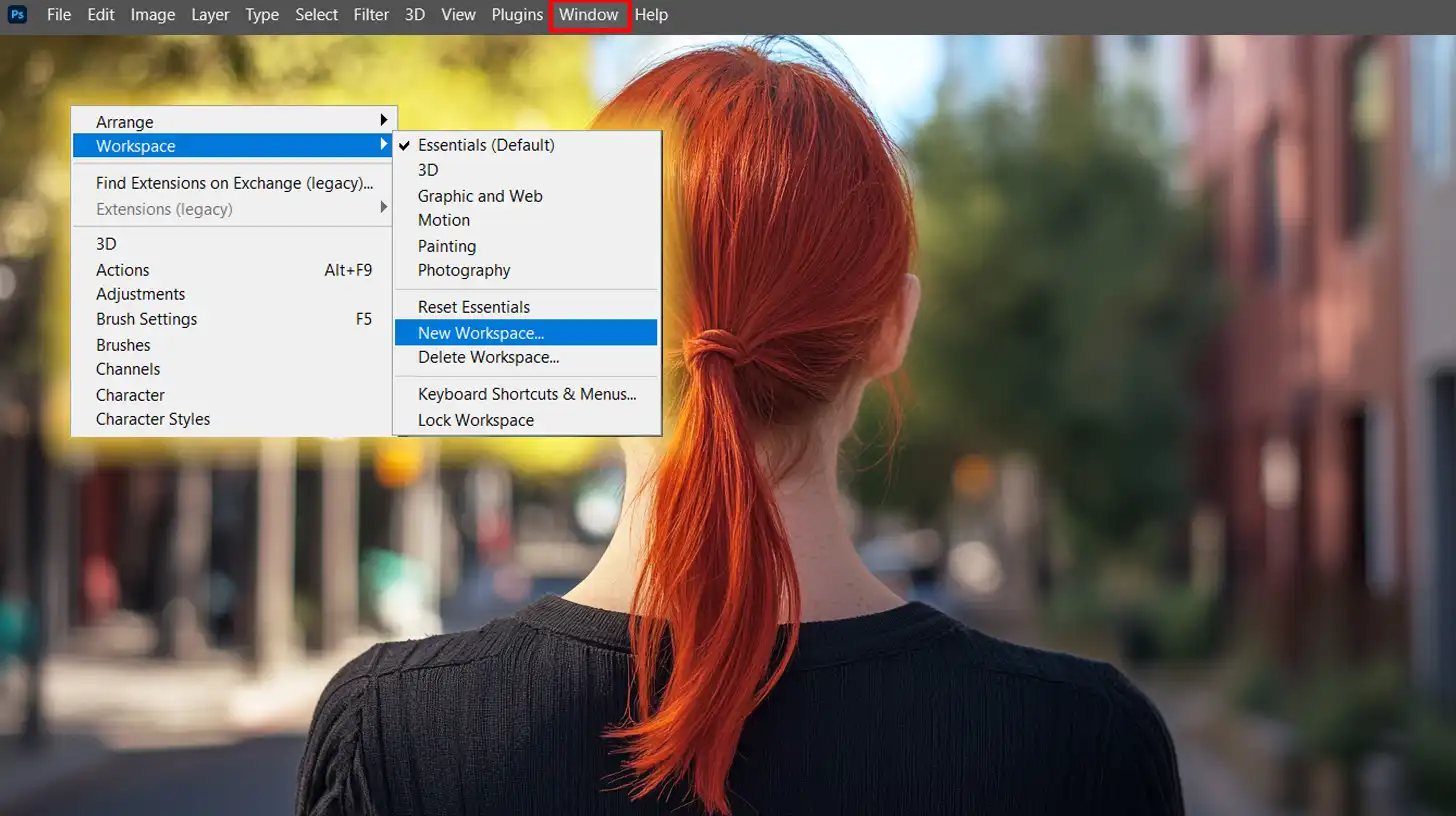
Movement and Navigation
Movement in Photoshop isn’t just about drawing. You should know how to zoom in and out, move around, and undo mistakes efficiently. Hold the spacebar to move around the canvas.
- To zoom, use Ctrl++ (Windows) or Command++ (Mac).
- To undo, simply use Ctrl+Z (Windows) or Command+Z (Mac).
- Holding the alt key while using the scroll wheel also helps to zoom.
Pro Tip: Take advantage of the undo multiple steps feature by going to Edit > Preferences > Performance and increasing the History States.
Essential Tools in Photoshop
Understanding the essential tools in Photoshop can significantly enhance your workflow. Tools like the Quick Selection Tool and Content-Aware Fill are invaluable for making precise selections and filling in areas seamlessly.
Photoshop Shortcuts
Mastering Photoshop shortcuts can save you a lot of time. For instance, pressing “B” selects the Brush Tool, while “L” selects the Lasso Tool. Learning these shortcuts can make your editing process much more efficient.
How to Draw in Photoshop
To create art in Photoshop, it’s important to understand how to draw effectively on layers, as this method can be time-consuming but ultimately enhances your artwork’s quality and flexibility.
This table outlines significant aspects of drawing in Photoshop, highlighting the tools and techniques that enhance your digital art experience.
Understanding these basic components will help you navigate the software more effectively and improve your artwork’s quality
| Aspect | Overview |
|---|---|
| Understanding Layers | Learn how to use layers effectively to organize your drawing and enhance editing flexibility. |
| Basic Tools for Drawing | Familiarize yourself with essential tools like the Pen Tool, Brush Tool, and Lasso Tool for effective drawing. |
| Creating Your First Sketch | Start with a rough sketch using brush tools, focusing on shapes before adding details. |
| Using the Pen Tool | Create precise lines and vector paths; essential for detailed artwork. |
| Refining Your Drawing | Focus on adding details and use smaller brushes for intricate work to enhance quality. |
| Creating Shape Layers | Utilize shape layers to define areas and create clean, organized designs. |
Getting Started with the Basic Tools
First, open Adobe Photoshop. Then, it’s time to set up your workspace. You’re looking at a variety of tools.
The most important ones for drawing are the pen tool, the brush tool, and the lasso tools. Understanding these fundamental tools in Photoshop will significantly enhance your drawing experience.
Pen Tool
Begin with the pen tool to create a vector path to ensure smooth arcs. If you need to adjust, use the shift key to constrain movements.
This tool is significant for fine lines and curves. Activate the tool by pressing “P” on your keyboard. In the options bar, choose between creating a shape layer or a path.
The pen tool is also useful for creating precise selections, which can be refined using the refine edges in Photoshop feature.
Brush Tool
Select a brush from the brush set. Use “B” to activate the tool. You can customize the size and hardness in the options bar.
Don’t forget about the eraser tool; it helps correct mistakes. Select “E” to activate it. For more advanced techniques, you might want to explore Photoshop Shortcuts to speed up your workflow.
Creating Your First Sketch in Photoshop
Start by creating a new canvas. Press “Ctrl+N” or go to File > New. Make sure it’s large enough for your project. Once you have your canvas, create a new layer to keep your drawing separate from the background.
Initial Sketch
Use the brush tools to draw a rough sketch. Don’t worry about details yet. Just get the shapes down.
Create different layers for each part of your drawing for easy editing later. This is where understanding Photoshop masking can come in handy to manage your layers effectively.
Refining Your Drawing
Now it’s time to refine your drawing. Focus on the details. Use smaller brushes for intricate work. Double-click on layers to rename them and keep everything organized.
Shape Layers
Create shape layers to define distinct areas. The shape tool in Photoshop can assist you. Use the custom shapes palette to enhance your work.
Pro tip: Overlay your lines with final brush strokes. Tweak as needed using the eraser tools. Remember, drawing in Photoshop takes practice. Don’t rush the process. Each stroke contributes to the final piece.
Save your work frequently. Use the Save As option to create different versions. This way, you can always go back if needed.
Using the Pen Tool to Draw in Photoshop
The pen tool in Adobe Photoshop is a game-changer for creating precise paths and selections. Many beginners overlook it because it seems daunting. Trust me, it’s not that hard.
Begin Your Drawing Process with the Pen tool
Start by opening a new canvas. Select the pen tool from the toolbar or hit the ‘P‘ key. Notice different options on the top menu – Pen Tool, Freeform Pen Tool, and so forth.
Drawing Lines
- To draw straight lines, click once on the canvas where you want to start your path. Then click somewhere else. Voilà! You’ve got a line.
- For curved lines, click and drag to create handles. These handles control the curve of the line. Release your mouse click, then create more anchor points by clicking again.
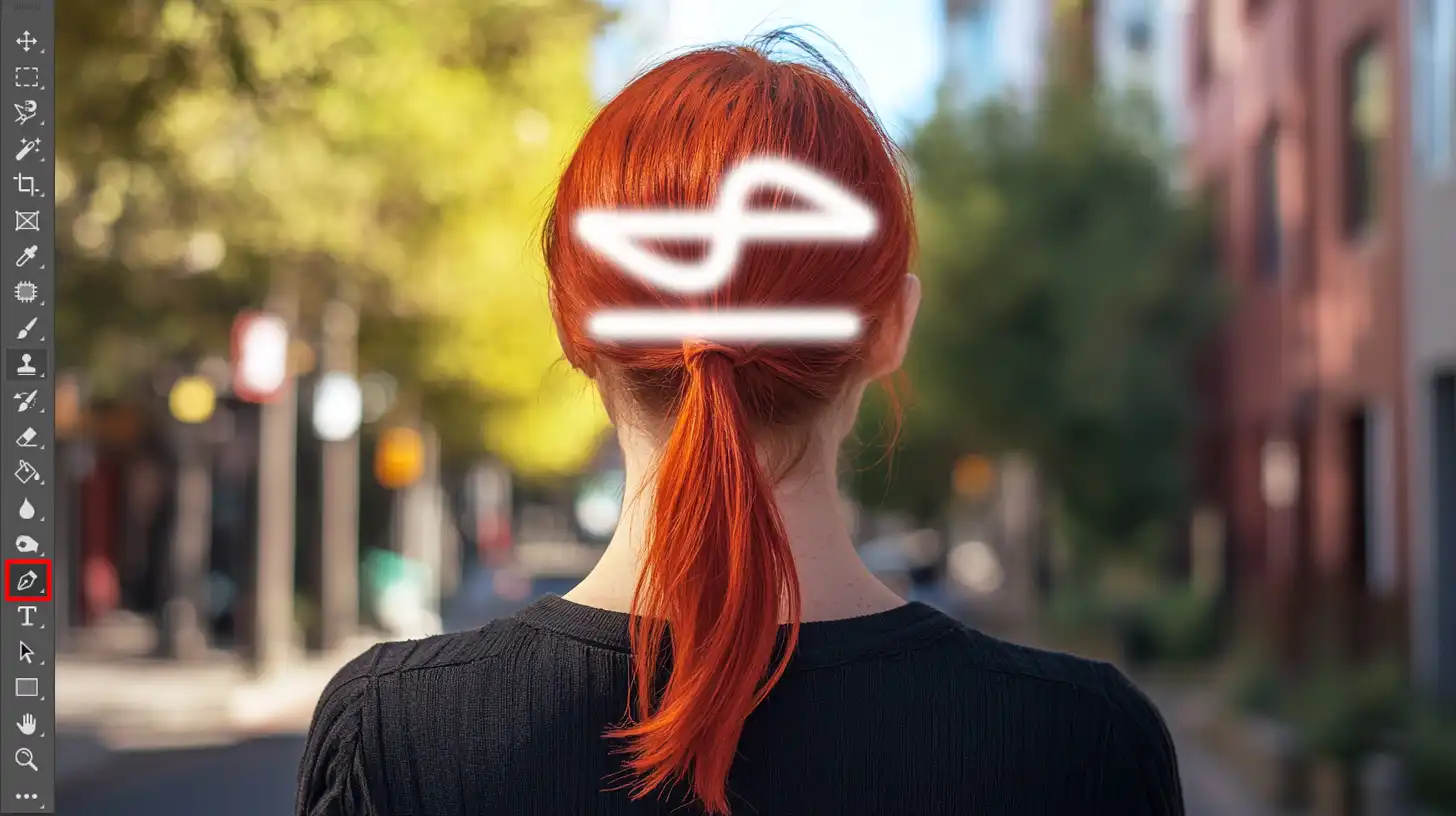
To master drawing lines in Photoshop, it’s important to know how to draw curved lines in Photoshop. This skill enhances your ability to create smooth and flowing designs.
Layer Management
One important point: Always create a new layer. This keeps your work organized and modifiable. Simply press Shift + Ctrl + N for a new layer. It’s that simple. Understanding how to remove an object in Photoshop can also be beneficial when managing layers.
Advanced Pen Tool Techniques
Let’s dive into some advanced techniques. First, work paths make life easier. A work path is a temporary path that you can convert to a selection or shape later.
To create a work path, select the pen tool, draw your path, then go to the Paths panel and double-click on Work Path to save it.
Complex Shapes
Want to draw complex shapes? Use the Pen Tool combined with shape layers. Select the pen tool, choose Shape from the dropdown menu on the top, and draw away. Photoshop fills the shapes automatically.
Refinement
Refinement is important. Use the direct selection tool (the white arrow) to tweak your anchor points and handles for precision.
Need to delete a point? Just click on it with the pen tool selected and press Delete.
Combine Shapes
For intricate drawings, using the Combine Shapes feature is beneficial. You can draw multiple shapes on a single shape layer.
Use the Add to Shape area option from the top menu bar for this. It allows the seamless merging of shapes without leaving any gaps.
Layer Management
Remember to always create separate layers for different elements of your drawing. This way, you can edit each layer independently without affecting others. Press Ctrl + J to duplicate a layer if needed.
Zoom In
Always zoom in when working with detailed paths. Press Z to activate the zoom tool, and zoom in close. It ensures precision.
Mastering the Brush Tool in Photoshop for Drawing
Mastering the Brush Tools in Photoshop allows you to draw with precision on layers, giving you the flexibility to manipulate pixels just like you would on traditional paper.
Choosing the Right Brush Tools
As you dive into Photoshop, the brush tools quickly become one of your closest allies. There are numerous brushes available, each serving different purposes.
You can select from hard-edged brushes for crisp lines or soft-edged brushes for smooth gradients.
Customizing Brush Settings
Customization is important to creating art that stands out. You can adjust the size, hardness, and opacity of each brush.
Double-click on the brush icon to access advanced settings, which allow for even finer control over your strokes. Experiment with different settings to see how each change affects your drawing.
Techniques With Effective Brushing for Drawing in Photoshop
Drawing clean lines or soft shadows requires specific techniques:
- Learn to combine drawing on separate layers. This practice ensures you can rework specific parts without affecting the whole image.
- Pay attention to the image edges for a professional finish.
- Use a variety of brushes within one drawing to help achieve depth and texture.
Pro Tip: Use the pen tool to draw precise outlines before filling in details with the brush tool.
Fundamental Tools for Drawing in Photoshop
While mastering the brush tool, it’s important to familiarize yourself with other fundamental tools in Photoshop.
For instance, the Patch Tool can be incredibly useful for removing unwanted elements from your artwork.
Additionally, understanding how to use smart objects in Photoshop can significantly enhance your workflow by allowing non-destructive editing.
Remember, practice makes perfect. Try different brushes and customize settings to find what works best for your style. Ready to create? Go open up Photoshop and start brushing!
Exploring Shape Tools in Photoshop
Exploring shape tool allows you to draw shapes easily, helping you draw multiple designs quickly and efficiently while enhancing your ability to draw complex compositions.
Introduction to Shape Tool
Photoshop offers various shape tools that simplify the process of creating vectors.
These tools are useful for beginners and experts alike, providing functionality in a digital canvas. Whether you’re into graphic design or photo editing, understanding these tools is important.
They help manage shapes and combine them into complex designs. Additionally, knowing how to use the shape tool in Photoshop can significantly enhance your workflow.
Creating Basic Shapes
To get started with basic shapes, locate the shape tool on the toolbar. Once selected, you will see options such as:
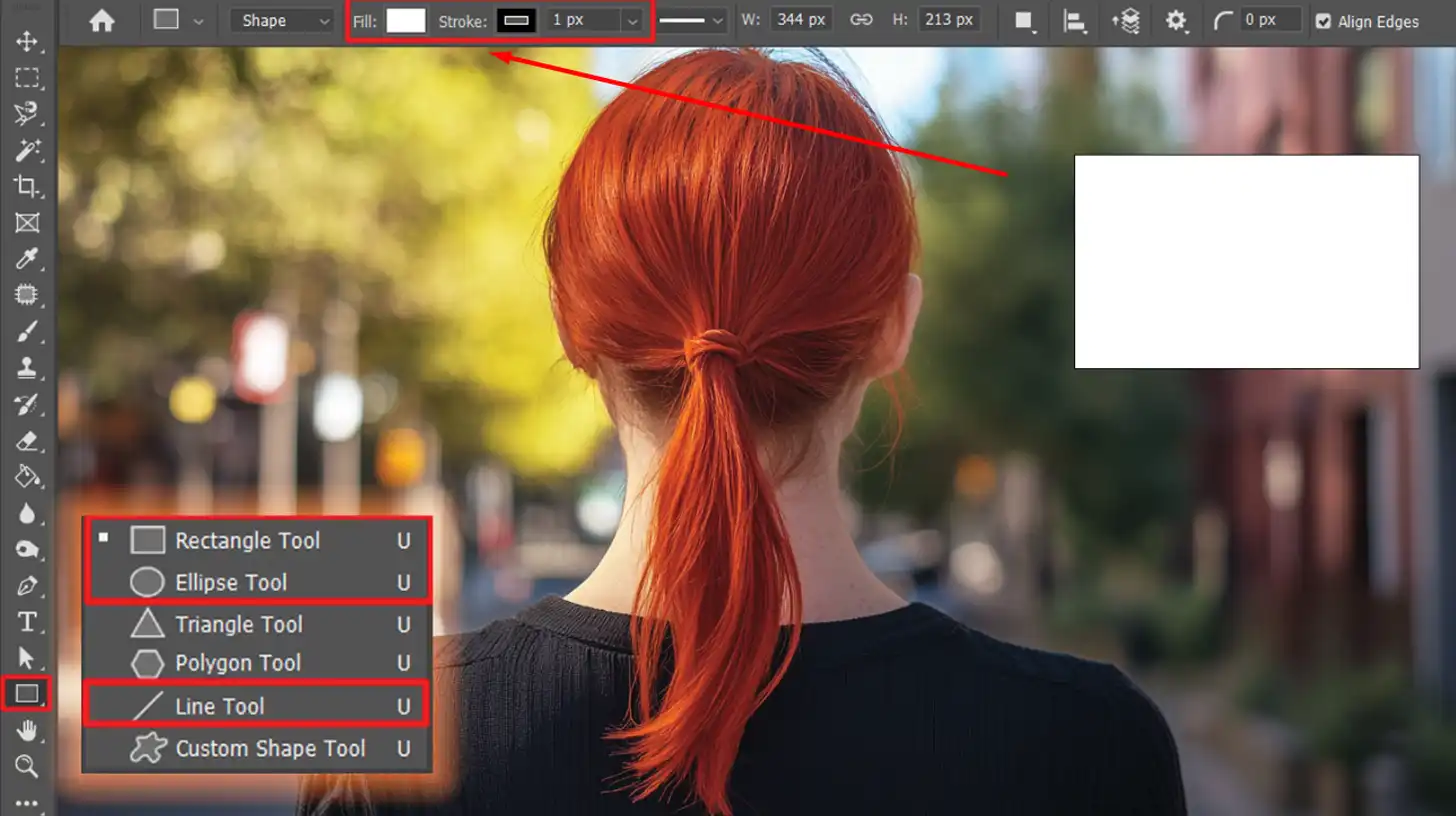
- Rectangle
- Ellipse
- Line
You can then use these to draw basic shapes on your canvas. A simple click-and-drag action allows you to create the desired geometric figure.
Adjusting settings like fill color and stroke makes customizing these shapes easier.
Experimenting with these settings will enhance the final product.
To effectively work with shapes in Photoshop, it’s important to learn how to add shapes in Photoshop. This skill allows you to create dynamic designs and enhance your artwork.
Combining Shapes for Complex Designs
Creating complex designs involves combining multiple shapes. Use the ‘Combine Shapes’ option to merge them into a single piece. This method opens up a wide range of creative possibilities.
It’s a handy workaround when drawings require intricate designs. On separate layers, draw each shape to maintain flexibility.
Moving or reshaping components without affecting others becomes straightforward.
Pro Tip: Practice with the pen tool for more precise shapes.
Create Vector Paths Drawings in Photoshop
To create vector path, you can draw with the pen tool, allowing you to draw smooth lines and curves that can be easily adjusted, giving you the freedom to draw intricate shapes and designs.
Understanding Vector Path
Vectors are important in Photoshop. They are not pixel-based, meaning they scale without losing quality. This usefulness makes them ideal for graphics, logos, and illustrations that need resizing.
Drawing with Precision
When dealing with precision, the pen tool is your go-to instrument. Click to create anchor points and manipulate curves by dragging handles.
The ‘pen‘ allows you to craft detailed shapes that can be modified later. Always practice to hone your skills with this tool.
Editing and Refining Paths
Refining paths is just as important as creating them. Use the direct selection tool to adjust anchor points for perfect alignment.
Remember, each path segment can be edited individually. This means you have complete control over your vector shapes.
Double-click on a path to isolate and fine-tune individual components. This approach ensures your final design is flawless. Also, use the ‘separate layer‘ option to maintain flexibility.
Using the path selection tool in Photoshop is significant for editing and refining paths effectively. This tool allows you to adjust anchor points and curves, ensuring your designs are precise.
Pro Tip: Don’t hesitate to use a combination of shapes and paths for best results. For sketching, start with a brush set and finalize with the pen tool for precision.
Additionally, consider using the content-aware fill in Photoshop to integrate your vector path into complex backgrounds seamlessly.
Frequently Asked Questions (FAQs)

Is there a way to draw on Photoshop?
- Yes, you can draw in Photoshop using various tools like the Brush, Pencil, or the Pen tool.
Can you freehand draw in Photoshop?
- Absolutely! The Brush tools is perfect for freehand drawing. Just select the Brush tools from the toolbar and start drawing on your canvas.
How to draw over an image in Photoshop?
- To draw over an image, open the image in Photoshop, create a new layer to preserve the original image, and use the Brush or Pencil tool on the new layer to draw.
How do you draw with the pencil tool in Photoshop?
- Select the Pencil tool from the toolbar. It's great for drawing hard-edged lines. Once selected, simply click and drag on the canvas to draw.
Conclusion
Learning how to draw in Photoshop has been a rewarding journey for me. It opened up new ways to express my creativity and make art that I couldn’t have achieved with traditional methods.
I found that practicing with different tools, like the brush and pen tools, made a big difference in my artwork. Each drawing teaches me something new, whether it’s about shapes, layers, or using color effectively.
If you want to take your skills further, I highly recommend checking out the Photoshop Course and the Lightroom course. These courses have helped me improve my techniques and can guide you on your own artistic journey.
Don’t forget to explore Adobe Photoshop and Adobe Lightroom as well. They are powerful tools that can help you make your art stand out. Remember, the secret to success is practice and patience. So grab your digital canvas and start creating!
Read more about Photoshop:














